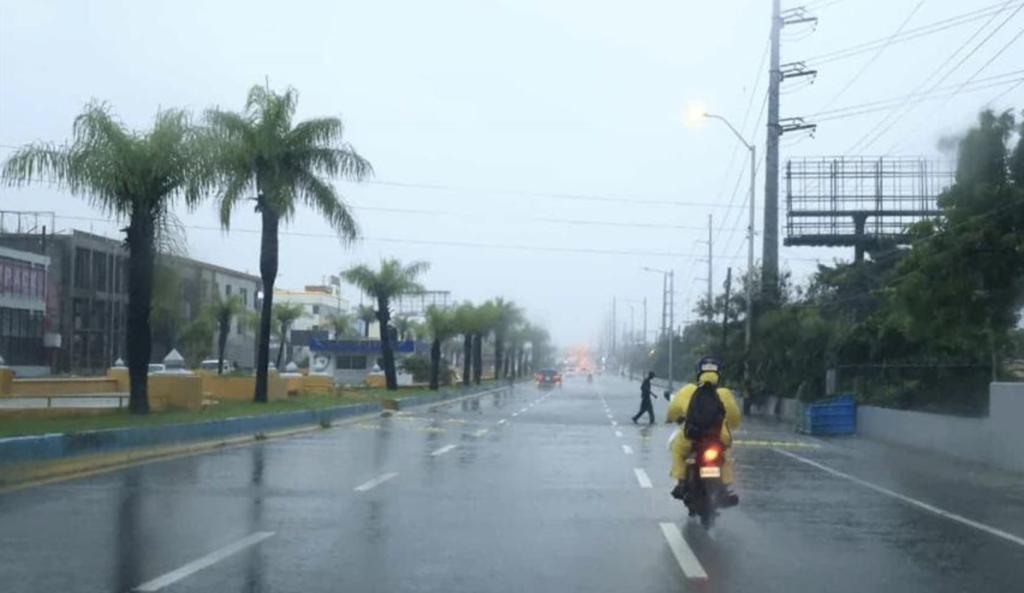
The rains and outer bands of Tropical Storm Melissa delivered a massive blow to the nation’s economy, with estimated daily losses potentially soaring above RD$17 billion, Diario Libre reports. The economic fallout, fueled by widespread production halts and business closures, is sending shockwaves across consumption, production, and commerce sectors, according to alarming reports from leading economists and business groups.
The Autonomous University of Santo Domingo’s (UASD) Faculty of Economic and Social Sciences calculated a production deficit of more than RD$10 billion per day due to the official suspension of activities for four days – from Wednesday, 23 to 25 October 2025, with the exception of a handfall of provinces on the north coast. Small retailers and businesses are facing a cumulative loss of RD$550 million, as reported by the National Council of Merchants and Businessmen (Conacerd).
The financial damage reflects the severe impact on key sectors, including private consumption, commerce, manufacturing, and agriculture, following multi-day suspension of productive activities across a major portion of the country.
Economist Ellen Pérez Ducy estimates that the paralysis, spanning from Wednesday to Saturday—equivalent to roughly 2.5 working days—primarily slashed private consumption, which typically averages RD$17 billion daily.
“With 24 provinces affected, including the heavily weighted National District, it is inferred that the effect applies to about 80% of the national total,” Pérez Ducy explained. “Assuming a 50% reduction in consumption, as it didn’t stop entirely, this yields a loss of approximately RD$17 billion,” as reported in Diario Libre.
Sectors most severely impacted include manufacturing, construction, commerce, hotels, bars, restaurants, and transport. Education and communications experienced minor effects, while the health sector faced partial disruptions, the economist noted.
The small business community has been particularly vulnerable. Conacerd reports that smaller enterprises have accumulated estimated losses of RD$550 million. This figure stems from power outages, flooding, and spoilage of perishable goods.
Antonio Cruz Rojas, Vice President of Conacerd, identified corner stores (colmados), minimarkets, small supermarkets, hardware stores, beauty salons, barbershops, coffee shops, and popular eateries as the most affected.
Conacerd further detailed agricultural devastation in the interior, particularly the South and Northwest, with heavy rains washing away livestock, including cows, pigs, and goats, from various farms. Over 3,785 families were affected, with 20% belonging to the retail sector. The deep South (20%) and Santo Domingo (15%) were cited as the most impacted zones.
Adding to the dire estimates, the UASD’s Faculty of Economic and Social Sciences calculates losses exceeding RD$10.137 billion daily purely from the official interruption of productive work.
“This impact is solely due to the reduction of productive activities,” clarified Dean Antonio Ciriaco Cruz. The economist cautioned that the final toll could be much higher when factoring in damages to productive assets, such as destroyed crops and vital infrastructure.
Ciriaco Cruz based his calculation on the premise that the Dominican economy generates a daily GDP of RD$20.27 billion and operated at only 50% capacity during the days of suspension.
Beyond the suspension losses, Minister of Agriculture Limber Cruz confirmed agricultural damage valued at approximately RD$1.34 billion during a press briefing. Key crops affected include coffee, rice, vegetables, and tubers. The coffee sector alone lost an estimated RD$74 million in future sales due to damage to 2,847 quintals. Pérez Ducy warned that unestimated losses of flooded harvests “could increase the price of some items if the supply is reduced.”
Read more in Spanish:
Diario Libre
30 October 2025

